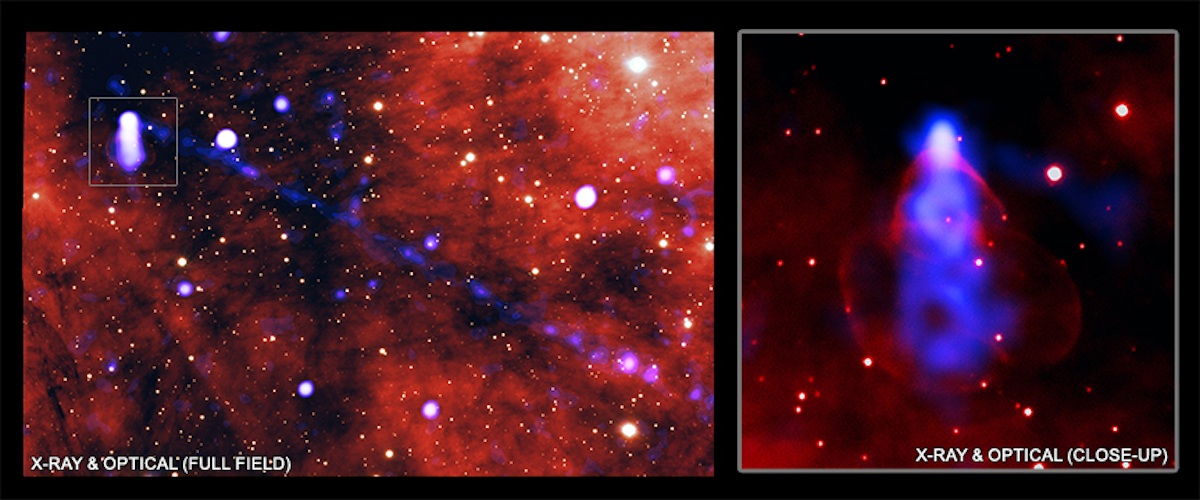
 Credit: X-ray: NASA/CXC/Stanford Univ./M. de Vries; Optical: NSF/AURA/Gemini Consortium
Credit: X-ray: NASA/CXC/Stanford Univ./M. de Vries; Optical: NSF/AURA/Gemini Consortium
A Leaky Anti-Matter Engine
It seems obvious to state that the visible Universe is composed of matter.
But the existence of the matter Universe is a mystery. We don't really know why electrons have a negative electrical charge and protons are positively charged. An anti-matter Universe, in which electrons are positively charged and protons negatively charged, anti-galaxies composed of anti-stars, seems equally likely. In fact, we don't really know why the Universe contains any matter at all, since the Big Bang should have produced exactly equal amounts of matter and anti-matter. Since the collision of matter and anti-matter converts the matter energy back to radiation (a process called annihilation) this should leave behind a Universe filled with nothing but radiation, devoid of matter. Even though we currently live in a Universe dominated by matter, anti-matter is sprinkled through the Galaxy and beyond. Because anti-matter should quickly annihilate with matter, the anti-matter we observe must be produced somehow. Anti-matter can be created from high energy radiation and high energy particle collisions, of the type we see on earth in atom smashers like the Large Hadron Collider. Rotating neutron stars, or pulsars, can also create observable amounts of anti-matter, but most of this anti-matter is trapped by the pulsar's strong magnetic field. But maybe not always. The image above shows two views of an X-ray and optical image of a pulsar called PSR J2030+4415, located about 1600 lightyears from earth. The X-ray image, from the Chandra X-ray Observatory, is shown in shades of blue-white, superimposed on the optical image. The image on the right shows a close up of the pulsar, moving towards the top of the image at about 1 million miles per hour, and trailing behind a wake of charged particles which glows in X-rays. The leftmost image shows a wider view in which a linear X-ray emitting "filament", composed of fast-moving charged particles of matter and anti-matter, extends from the pulsar for about 1 trillion miles into space. The collision of the pulsar's magnetic field with the nearby magnetic field of the Galaxy close to the pulsar is thought to form a magnetic "nozzle", though which matter and anti-matter leak from the pulsar into space. These types of magnetic leaks could help explain the long-standing puzzle of how anti-matter is distributed through the Galaxy.
Published: April 11, 2022
<
HEA Dictionary ● Archive
● Search HEAPOW
● Other Languages
● HEAPOW on Facebook
● Download all Images
● Education ● HEAD
>

Each week the HEASARC
brings you new, exciting and beautiful images from X-ray and Gamma ray
astronomy. Check back each week and be sure to check out the HEAPOW archive!
Page Author: Dr. Michael F. Corcoran
Last modified Monday, 26-Feb-2024 17:23:14 EST


